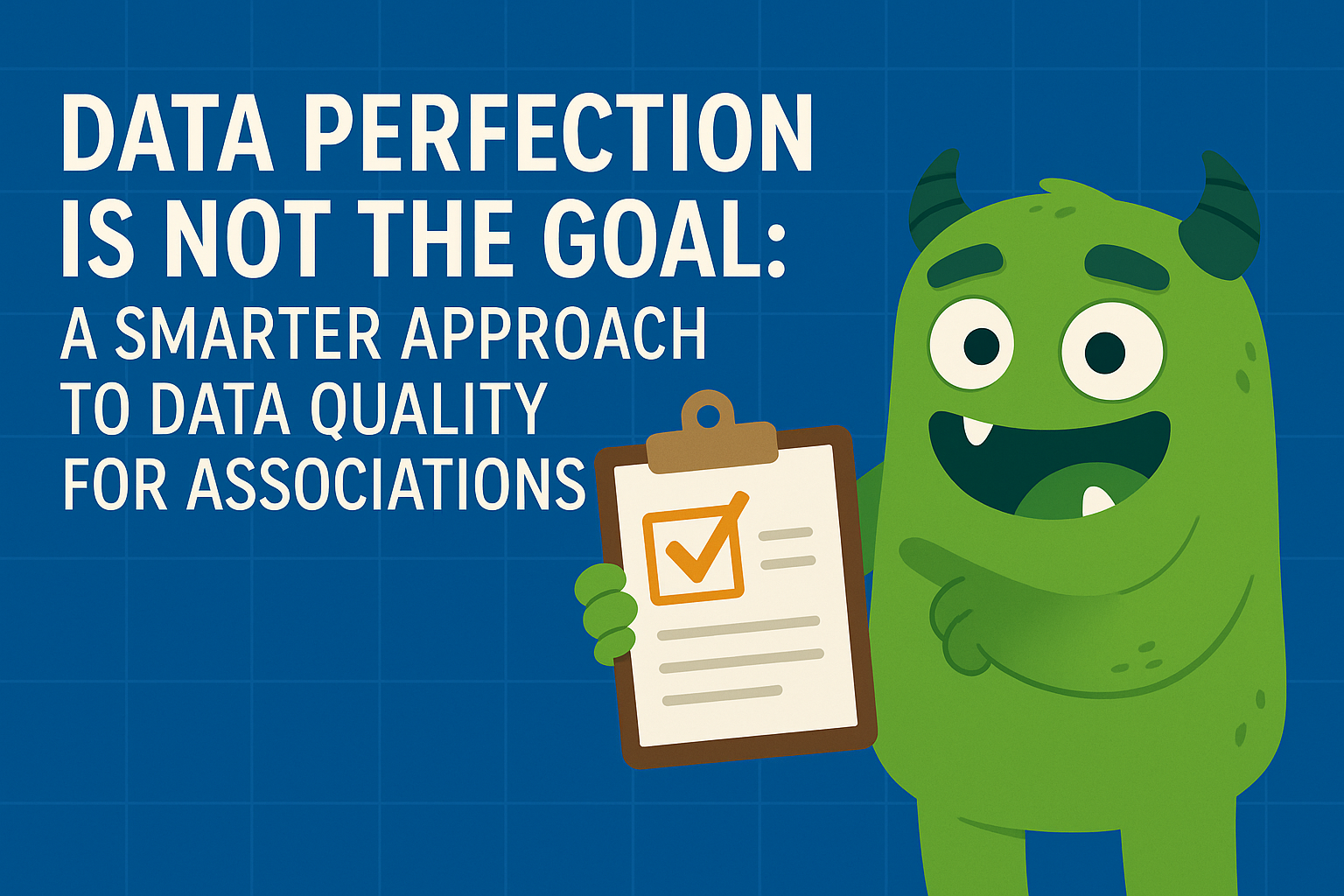Data Perfection Is Not the Goal: A Smarter Approach to Data Quality for Associations

The Trap of Data Perfection
Too often, associations delay key initiatives because their data is “not quite ready.” They may worry about duplicates, inconsistent titles, or missing demographics. While these concerns are valid, waiting for flawless data can stall progress and lead to missed opportunities.
The reality? No organization has perfect data. Even the most sophisticated corporations operate with messy, incomplete, or outdated information. What sets high-performing organizations apart is not the cleanliness of their databases, but their clarity on how data supports decisions and strategic goals.
Shift the Question: From “Is This Data Clean?” to “Is This Data Useful?”
Instead of chasing perfection, associations should reframe the conversation:
- What business decisions are we trying to make?
- What data do we need to support those decisions?
- What’s “good enough” for this purpose?
Ultimately, data is a means to an end. Let usefulness—not perfection—be your guiding principle.
Reframing Data Quality Through Purpose
This shift from perfection to purpose changes how associations approach data:
- Start with strategic goals: Identify your top 2 to 3 strategic objectives for the year—whether it’s boosting member retention, driving event attendance, or increasing advocacy influence. (TIP: Be careful not to overextend on the initiatives. Select the most important objectives that data can affect and focus on those outcomes for success.)
- Map data to decisions: For each key decision your association makes, identify what data informs that decision. This creates a direct line between data quality and organizational impact.
- Determine value and impact of the data: Not every business area has the same data quality requirements. To determine where to prioritize your data quality improvement, look at the business value and business impact of the data.
- Business value – does the data affect revenue, productivity, or operations? For example, what would happen if the data was “bad?” Would there be loss of revenue? Would there be increased operations costs?
- Business impact – does the data affect your members, your internal users, or other constituents? How does bad data impact this?
- Define “good enough”: Determine the threshold of quality needed to make confident decisions. Aim for actionable, not flawless.
- Establish feedback loops: Encourage users to flag real-world data issues. This ensures your data quality efforts address practical challenges, not theoretical ones.
Start Small, Learn Fast
You don’t need perfect data to start making data-informed decisions. Instead:
- Pilot a report or dashboard tied to a strategic goal.
- Use what you learn to refine both your data and your processes.
- Embrace a mindset where data quality improves through use—not in isolation.
In Closing
Perfection is a moving target. Impact is measurable. Associations that shift from spotless data to strategic insight will be better equipped to serve, lead, and grow.
Ask yourself: Are we using our data to drive decisions—or are we letting imperfections hold us back?
Next Steps
Need help with your data decisions, culture, and governance? Cimatri’s expert consultants are here to guide you. Contact us today to discuss how we can help.



